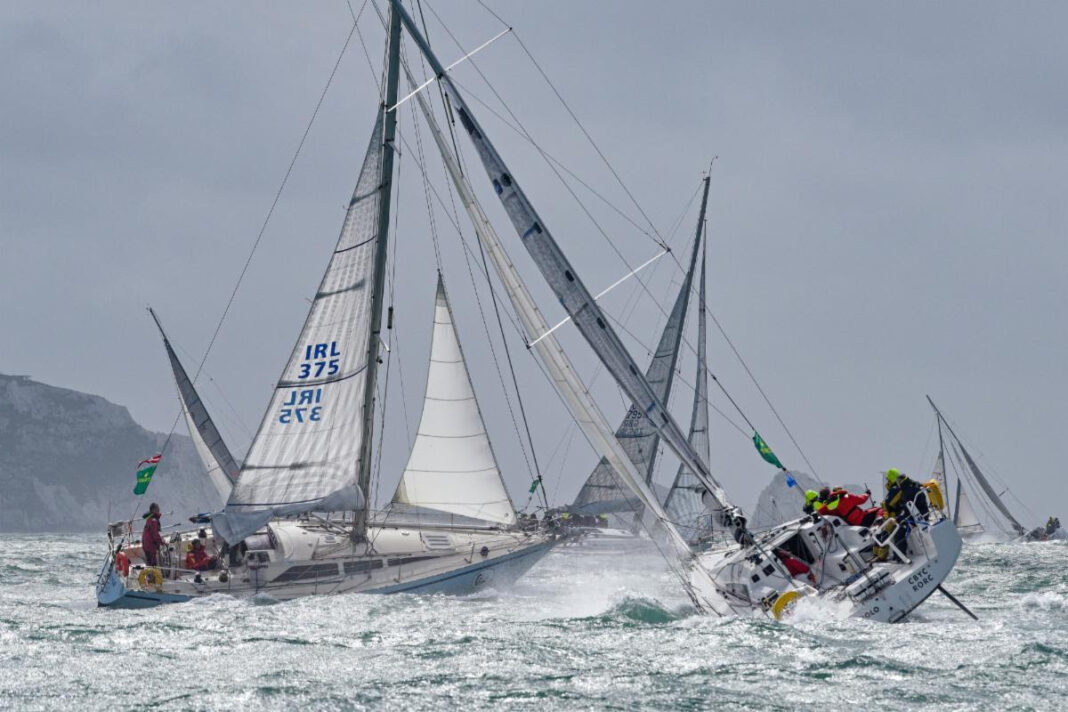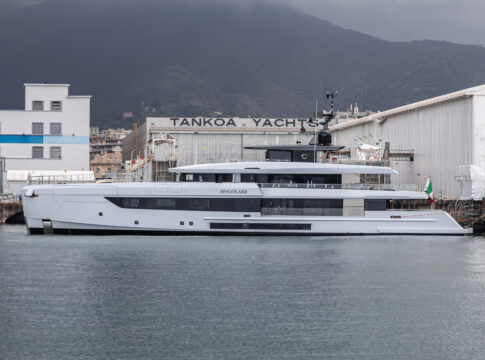Teams that competed in the last two Rolex Fastnet Races and are returning for this Saturday’s special centenary edition will be breathing a sigh of relief looking at the long term forecast.
In contrast to the battering they received from the 30+ knot winds at the start and the subsequent gale force winds of the first 24 hours they endured during the last two editions, the long term forecast for this year’s race shows more benign conditions.
Regardless of the wind conditions, the Rolex Fastnet Race is never easy as it always involves making best use, of or attempting to avoid, the tide, especially while exiting the Solent and off southern England’s famous headlands – St Alban’s Point, Start Point, the Lizard, Land’s End – and again at the end of the race when all competitors will be affected, for better or worse, by the powerful Alderney race on the approach to Cherbourg.
Along the way it is mandatory that competitors avoid the Traffic Separation Schemes (TSSes). Exiting the Solent the Casquets TSS mid-Channel limits how far south boats can go before they are obliged to tack (although faster classes like the Ultims and IMOCAs often go south of this TSS). Tactically one of the most important lies off Land’s End where the shorter passage is between this and the Scilly Isles, but depending upon the state of wind and tide it can also be advantageous to take the longer route between the TSS and Land’s End.
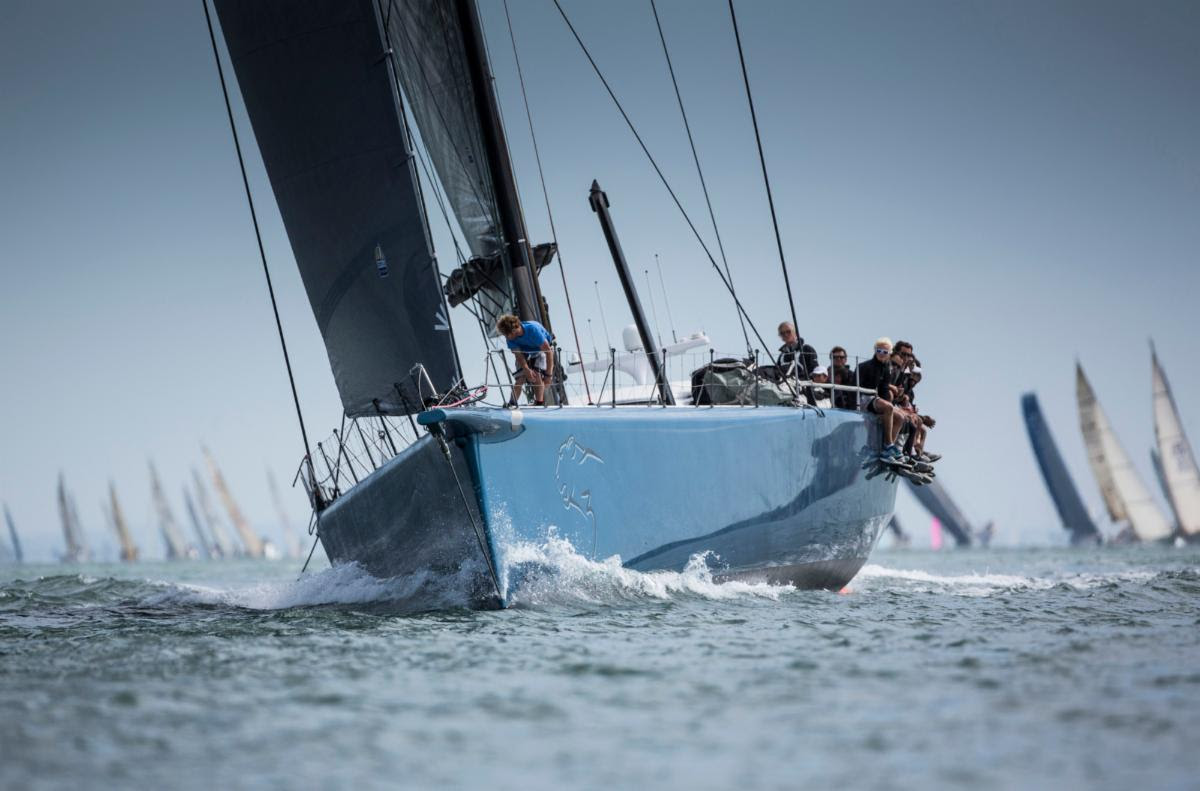
Another TSS is immediately south of the Fastnet Rock, acting as a natural spreader mark, separating yachts arriving at the Rock from those exiting it. TSSes also lie to the west and south of the Scilly Isles and there is a further tactical option to leave the former to port or starboard.
Finally the Casquets TSS once again comes into play forcing competitors south of it and causing some even to pass south of Guernsey to avoid the worst of the tide (although the Ultim Banque Populaire last year sailed around the north side of the Casquets) en route to the finish line.
While at present the weather for the 51st Rolex Fastnet Race looks like it will be dominated by a giant area of high pressure off to the west and southwest, the shape of this and a micro system that may or may not be spinning up in the Celtic Sea on start day are currently playing havoc with the routing, at least for the bigger boats.
“It’s really tricky,” comments Will Best, navigator on Leopard 3. “The difference between yesterday and today is almost 24 hours in routing for us. There’s a system coming and at the moment the timing, intensity and associated weather are not lining up. The UK model is quite a big outlier at the moment.
The EC model is looking better today compared to what we expect – probably two and a half days for us. Yesterday it was a pure windward-leeward with quite light VMG downwind to the finish and today it’s not crazy wind speeds, but it just turns into a reach to the finish which saves us hours on these 100s. It’s pretty normal for it to be this inconsistent so far out – it will settle down and line up in the next day or so.”
Aside from the depression that, according to the UKMO model, may form over the Celtic Sea at the weekend, there are otherwise none of the usual depressions with their associated fronts.
With her 5.5m draft, the 100ft Leopard 3 can’t rock hop like smaller boats, but her speed means she is likely to get through the major tidal gates early on in the race and she also benefits from her towering rig if conditions get light. This, Best believes, helped them in their run-away victory in the Cowes-Dinard-St Malo race at the beginning of the month.
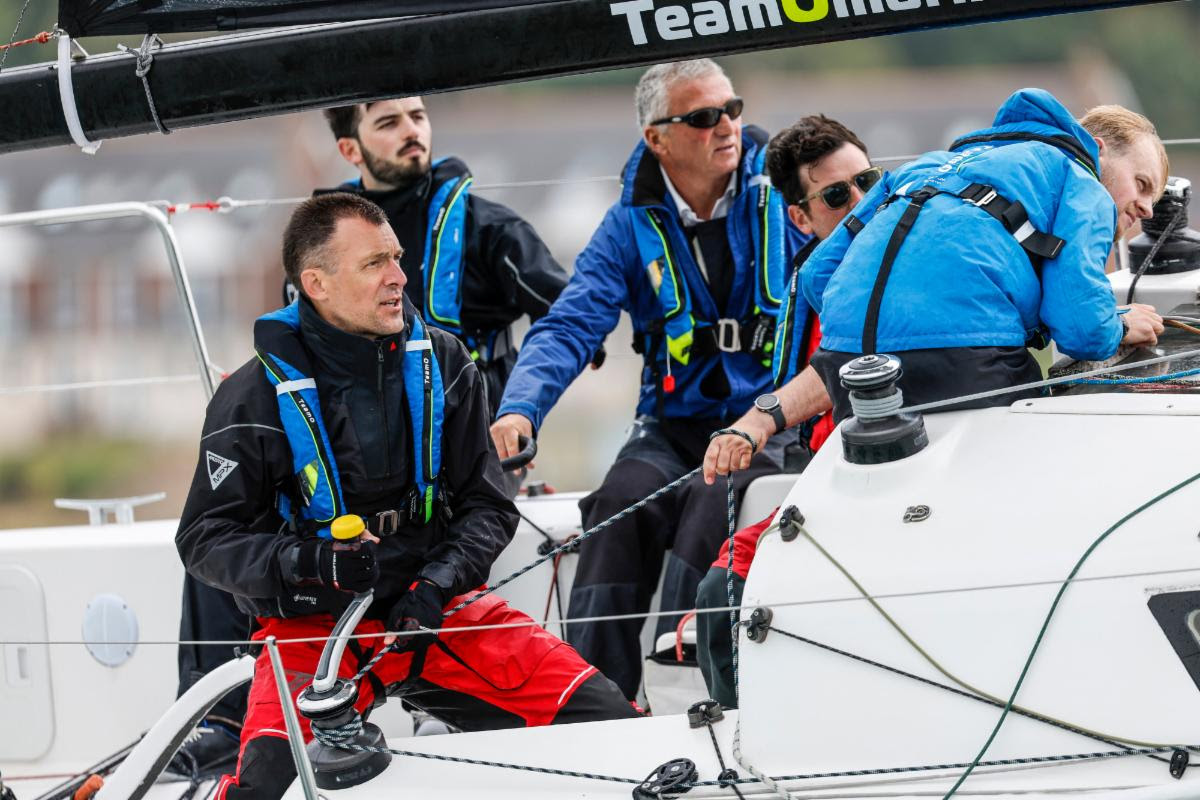
Oddly the bigger variation in conditions seems set to occur over the weekend compared to next week.
RORC Rear Commodore Joe Lacey is racing doublehanded on Midnight Blues, Jean-Eudes Renier’s Pogo RC, a new 33ft one design offshore racer from Bernard Nivelt and Sam Manuard.
“Big picture, the weather is basically stable,” he says. “There’s high pressure over the Atlantic, which the entire fleet is probably going to be in for the entirety of the race. The exact position of that high pressure changes the angles. For example, going along the south coast, it could be upwind, it could be reaching. And going across the Irish Sea, it could be upwind and it could be reaching.
“At the moment, it says we’re going to be upwind in 12-15 knots at the start, but then it will take us 24+ hours to go along the south coast of the UK, so by Sunday we should be reaching. Maybe we will still get some shifts, but I don’t think it’s very stable… The forecast is changing daily.
At the moment, it’s giving us some positive readings: our fleet will finish in 3.5-4 days and it goes well for us if we can reach along the coast of England. At the moment we’ll never have more than 20 knots of wind and never less than eight knots. Our boat is a reaching and downwind machine, and we’re racing against others with the same rating, but 10ft longer. So if there’s a lot of upwind we’re going to struggle to save our rating, but if it turns into a reaching course, then that’s great news for us.”
To date five Pogo RCs have been launched and another, Aruba, the Pogo Structures ‘works’ boat has been entered by Achille Nebout and Tanguy Bouroullec.
Currently leading the RORC Season’s Points Championship in IRC Four is Mark Brown’s JPK 1010 Jetpack. Navigator on board is Sam Jones. “It looks like it’s going to be north westerly for the majority of the race,” says Jones. “The models seem to be fairly in agreement for that – quite different from the last couple of editions.
“Our late start in IRC Four is obviously going to have an impact with the light winds and our making it through the tide gates along the south coast. So it will be a challenge to get around St Alban’s Head.
“It’s going to be a pretty standard beat out of Solent, but because it’s a prevailing north westerly, once we get out into Christchurch Bay, it could swing round a bit. I don’t know whether it’ll go fully into a reach until we get towards Weymouth…”
Fortunately the JPK 1010 goes well upwind. “Mid-teens upwind – we seem to do quite well in that, like we had in the Myth of Malham, beating up to the Eddystone. But we’re not quite as fast as the Sun Fast 3200s downwind, mostly because we’re quite a bit heavier than them.”
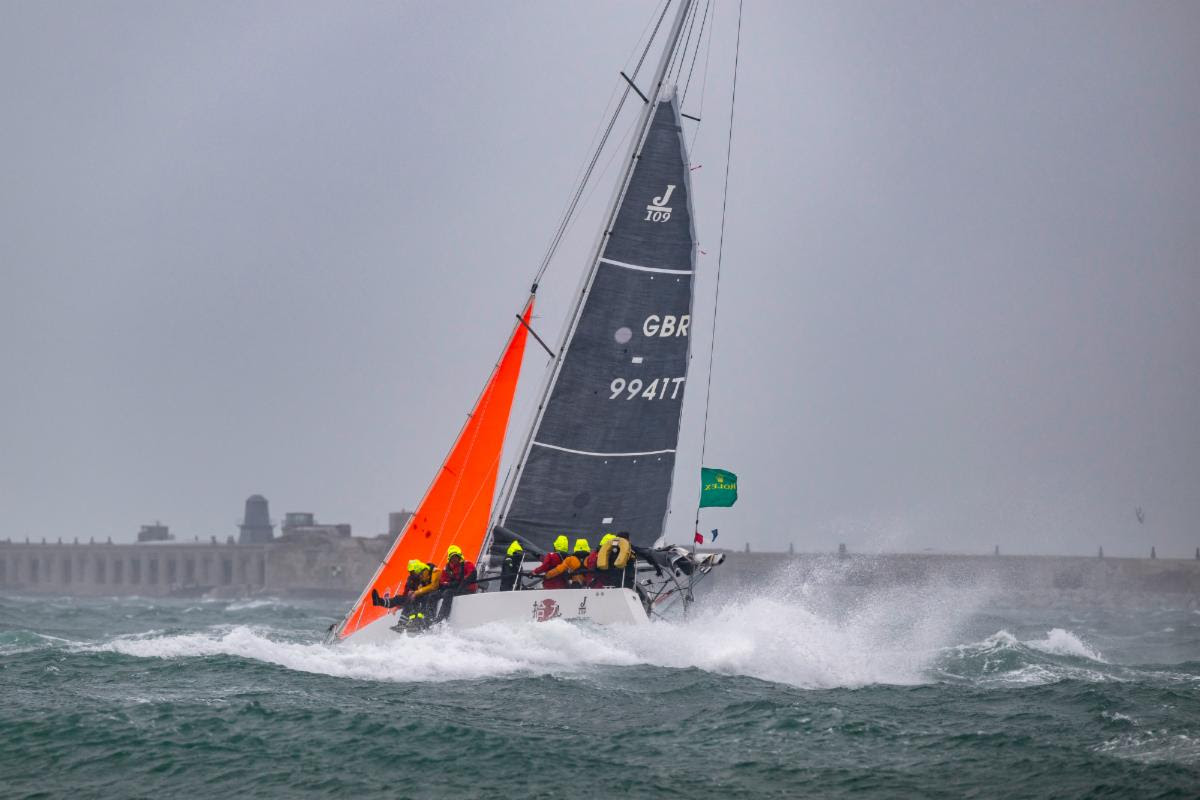
“To the Rock it looks like the wind oscillates between 10 and 20 knots – possibly slightly more as we get closer. And then it’s putting the kite up and going all the way to Cherbourg by the looks of it.”
Mark Brown bought Jetpack for the 2023 season as a replacement for his A-31 Assassin. That year they won both the inshore and offshore components of the JOG series. They started the Rolex Fastnet Race that year but had to withdraw after blowing out a vital sail. Currently they are leading IRC Four by more than 100 points.
A key difference with Jetpack compared to the other JPK 1010s is that they sail with a full crew of six while many are doublehanded. “In light winds we’ve got a bit of a weight disadvantage, but we’re hoping that we can keep pushing hard as we go all the way through,” concludes Jones.


